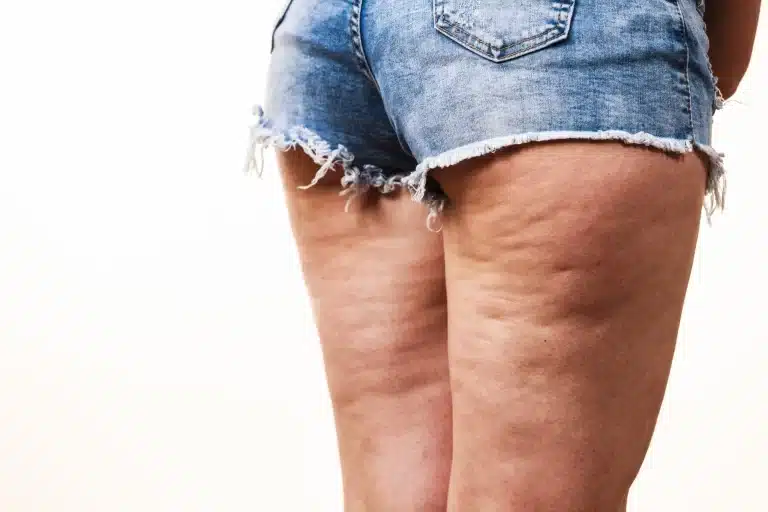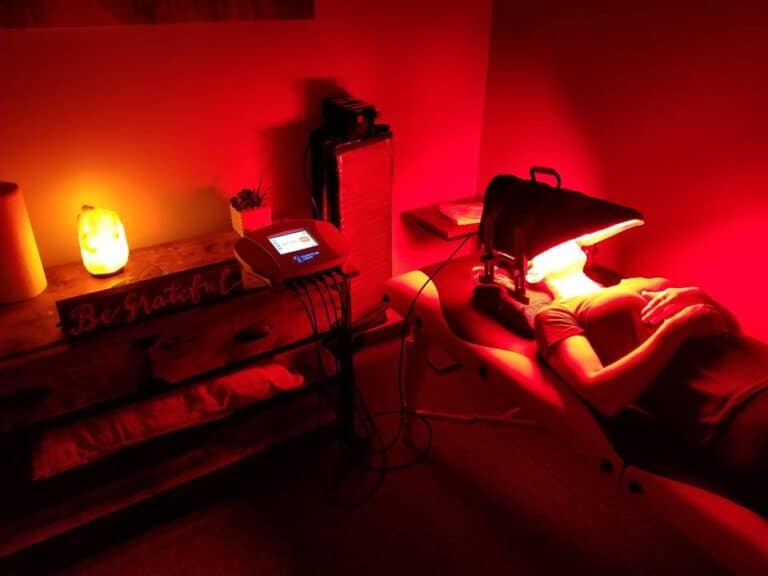Buttock Fat Transfer Recovery Time: Key Tips & Warning Signs
Ever wondered how long it takes to bounce back after a buttock fat transfer performed by an experienced plastic surgeon for contoured buttocks and liposculpture recovery time? Recovery time for this popular cosmetic procedure can vary, but understanding the basics, postoperative care, and consulting an experienced plastic surgeon helps you plan better. Knowing what to expect post-surgery and understanding postoperative care is crucial for a smooth healing process during the recovery period.
We’ll cover the typical timeline, key factors affecting recovery, and tips to speed up the healing process for cosmetic surgery, fat transfer surgery, and butt lift procedure. Whether you’re considering the procedure or already booked, this guide will help you navigate your butt lift surgery and fat transfer surgeries journey with confidence, including recovery time.
Understanding BBL and Its Benefits
BBL Procedure
The Brazilian Butt Lift (BBL) is a cosmetic surgery. It enhances the shape and volume of the buttocks. Surgeons use the patient’s own fat for this procedure. First, they remove fat from areas like the abdomen, thighs, or flanks for a butt lift procedure. This process is called liposuction.
Next, the surgeon purifies the fat. Then, they inject it into the buttocks. This method provides a natural look and feel. BBL is popular because it uses the patient’s own fat, reducing the risk of rejection in the butt lift procedure.
Dual Benefits
A significant benefit of BBL is dual-purpose. It removes unwanted fat and enhances the buttocks. Patients often have stubborn fat in areas like the belly or thighs. Liposuction helps to contour these areas.
After removing unwanted fat, surgeons transfer it to the buttocks. This creates a fuller and more lifted appearance. Patients enjoy a slimmer waistline and enhanced curves.
Improved Body Contour
BBL improves overall body contour. By removing fat from problem areas, patients achieve a balanced look. The procedure targets specific areas for fat removal.
The added volume to the buttocks creates an hourglass figure. Many patients report feeling more confident in their bodies after surgery. Clothes fit better, and they feel more attractive.
Self-Esteem Boost
BBL can boost self-esteem significantly. Many people feel insecure about their body shape. After surgery, patients often experience a positive change in how they view themselves.
Increased confidence leads to better mental health. Patients feel more comfortable in social settings and may engage in activities they previously avoided.
BBL vs Other Lift Procedures
Natural Results
BBL surgery uses your own fat. This makes the results look more natural. In contrast, implants are synthetic. They can feel less natural and sometimes shift.
Butt lift procedures using implants have a higher risk of rejection. Your body might see them as foreign objects. With BBL, this risk is lower since it’s your own fat.
BBL surgery also provides a dual benefit. It removes unwanted fat from other areas of your body. This can improve your overall shape.
Recovery Times
Recovery times differ between BBL and other butt lift surgeries. After BBL, patients usually need two to three weeks of downtime. During this period, sitting directly on the buttocks should be avoided.
Implant surgeries often require a longer recovery time. Patients might need up to six weeks before resuming normal activities. This is because the body needs more time to adjust to the implants.
Traditional butt lift procedures might also involve longer recovery periods. These procedures often include more extensive incisions and sutures.
Potential Complications
Complications vary between different cosmetic procedures. BBL has some risks like any surgery. These can include infection or fat embolism. However, these risks are minimized with skilled surgeons.
Implants carry unique risks. These include implant displacement or rupture. Over time, implants might need replacement due to wear and tear.
Traditional butt lift surgeries can lead to visible scars. The larger incisions required increase this risk. Infection rates might also be higher due to the extent of the surgery.
Longevity of Results
The longevity of butt lift results differs by procedure type. BBL results can last for several years, even decades. The transferred fat cells integrate into the body naturally.
Implants may not last as long. They might need replacement every 10-15 years. This adds additional costs and potential complications over time.
Traditional butt lifts provide lasting results too. However, they don’t add volume like BBL or implants do.
Cost Considerations
Costs vary among different cosmetic procedures. BBL might be more cost-effective in the long run due to fewer follow-up surgeries needed.
Implants might seem cheaper initially but consider future replacements and complications. Traditional butt lifts can be costly due to the extensive nature of the surgery.
Fat Removal Areas for Buttock Augmentation
Common Donor Sites
Fat transfer buttock augmentation uses fat from various body parts. The most common donor sites include the abdomen, hips, and thighs. Liposuction removes fat from these areas. This process helps to contour the body while preparing fat for transfer.
Strategic Fat Removal
Strategic fat removal enhances overall body shape. By taking fat from specific areas, surgeons can improve body proportions. This dual benefit makes fat transfer surgeries popular. Patients see improvements in more than one area.
Criteria for Good Candidates
Good candidates need enough fat deposits. Those without sufficient fat may not qualify for this procedure. Ideal candidates have excess fat in the abdomen, hips, or thighs. An experienced plastic surgeon evaluates these factors before proceeding with the surgery.
Liposuction Techniques
Liposuction techniques vary. Traditional liposuction technique is common but other methods exist. Assisted liposuction uses advanced technology for better results. Each method aims to safely remove and prepare fat for grafting.
Benefits of Fat Grafting
Fat grafting offers multiple benefits. It provides natural-looking results and reduces risks of rejection. Unlike implants, fat transfer uses the patient’s own tissue. This makes it a safer option for many individuals seeking butt augmentation.
First 24 Hours Post-Surgery
Immediate Monitoring
After the buttock fat transfer, patients spend the first few hours in a recovery room. Nurses and medical staff monitor vital signs closely. This includes checking heart rate, blood pressure, and oxygen levels. Postoperative care is crucial to ensure there are no complications.
Patients may feel groggy due to anesthesia. It’s normal to feel tired and disoriented. Medical staff will also check the surgical sites for any signs of excessive bleeding or infection.
Home Care Assistance
Once discharged, having someone assist at home is essential. Patients should not drive or operate machinery. A family member or friend can help with mobility and basic needs.
Assistance helps prevent falls and other injuries. It ensures that patients follow their surgeon’s instructions properly. Surgical recovery requires rest and limited movement.
Initial Recovery Signs
In the first 24 hours, patients should notice some initial signs of recovery. Reduced grogginess is a good indicator. By this time, anesthesia effects start to wear off.
Patients should also be able to drink fluids comfortably. Staying hydrated is important for healing. Any difficulty in drinking or swallowing should be reported to the surgeon immediately.
Pain Management
Pain is common after surgery. Surgeons prescribe pain medications to manage discomfort. It’s important to take these medications as directed.
Ice packs can help reduce swelling and pain at the surgical site. Elevating the legs can also minimize swelling in the buttocks area.
Mobility Restrictions
Limited movement is advised during the first 24 hours. Patients should avoid sitting directly on their buttocks. Lying on the stomach or sides is recommended.
Using cushions or special pillows can help when sitting becomes necessary. These measures protect the transferred fat cells and promote better results.
Monitoring Surgical Sites
Regularly checking the surgical sites is important. Look for any signs of infection such as redness, increased pain, or unusual discharge.
Contacting the surgeon if any concerning symptoms appear is crucial. Early intervention can prevent serious complications.
Hydration and Nutrition
Staying hydrated aids in recovery. Drinking plenty of water helps flush out anesthesia from the body.
Eating light meals rich in vitamins and proteins supports healing. Avoiding heavy or greasy foods can prevent nausea and digestive issues.
Recognizing Recovery Red Flags
Severe Pain
Experiencing severe pain after a buttock fat transfer can be a red flag. While some discomfort is normal, intense pain that doesn’t improve could indicate complications. Contact the surgical team if pain worsens or becomes unbearable.
Fever
A fever above 100.4°F (38°C) is another red flag. A high fever may signal an infection in the recovery area. If you develop a fever, seek medical advice immediately. Prompt treatment can prevent serious issues.
Signs of Infection
Infections are serious and need immediate attention. Watch for:
- Redness spreading around the incision
- Pus or unusual discharge
- Foul odor from the recovery area
If any of these signs appear, contact your surgeon right away.
Unusual Swelling
e swelling is expected after surgery. However, unusual or excessive swelling can be problematic. If one buttock swells more than the other or if swelling persists beyond two weeks, it might indicate a problem.
Bleeding
Bleeding should be minimal post-surgery. If you notice significant bleeding that soaks through bandages, this is a red flag. Immediate medical attention is necessary to address potential complications.
Numbness or Tingling
Feeling numbness or tingling in the buttocks or legs can be concerning. This could suggest nerve damage or other issues in the recovery area. Persistent numbness needs evaluation by your doctor.
Difficulty Breathing
Difficulty breathing is an emergency. This symptom could indicate a blood clot or other serious conditions. Seek emergency medical help if you experience shortness of breath.
Contacting Your Surgical Team
Know how to reach your surgical team at all times. They should provide a 24/7 contact number for emergencies. In case of concerning symptoms:
- Call the provided emergency number immediately.
- Explain your symptoms clearly.
- Follow their instructions carefully.
Initial Two Weeks of Recovery
Physical Limitations
During the initial two weeks, expect significant physical limitations. Movement will be restricted. Patients must avoid sitting directly on their buttocks to prevent pressure on the transferred fat cells. Standing and walking should be minimal.
Taking time off work is necessary. Most people need at least two weeks off to recover properly. Resting helps in preventing complications and ensures a smoother recovery period.

Managing Pain
Moderate pain is common after surgery. Doctors prescribe medications to manage pain effectively. Painkillers help in reducing discomfort, allowing patients to rest better.
Bruising and inflammation are also expected. These symptoms usually peak within the first few days and then gradually subside. Applying cold compresses can help reduce swelling.
Post-Operative Instructions
Following post-operative instructions is crucial for a successful recovery. Surgeons provide specific guidelines to avoid complications. Patients must adhere strictly to these instructions.
Wearing compression garments is often recommended. These garments help in reducing swelling and support the new shape of the buttocks.
Temporary Feelings
Temporary feelings of depression or anxiety may occur during recovery. These emotions are normal due to physical discomfort and limited mobility. Patients should communicate with their healthcare providers if these feelings become overwhelming.
Support from family and friends can be beneficial during this time. Emotional support plays a significant role in the overall recovery process.
Rest and Recovery Room
Rest is essential in the initial two weeks. The recovery room should be comfortable and equipped with pillows to support different positions without putting pressure on the buttocks.
Creating a restful environment aids in healing. Keeping essentials like water, medications, and entertainment within reach minimizes unnecessary movement.
Recovery Progress Weeks 3 to 8
Physical Activity
During weeks 3 to 8, patients can start increasing their physical activity. Light exercises such as walking are recommended. Avoid strenuous activities that may strain the buttocks region. Gradually increase the intensity of your workouts over time.
Sitting Transition
Patients can begin to sit with the aid of a BBL pillow. This pillow helps avoid direct pressure on the buttocks. Continue using the pillow for several weeks. Direct pressure can affect fat survival in the transferred area.
Compression Garments
Compression garments play a crucial role during this period. They help shape the buttocks and reduce swelling. Wear these garments consistently to achieve optimal results. Ensure they fit properly for maximum effectiveness.
Monitoring Progress
Regular follow-ups with your surgeon are essential. These appointments help monitor your recovery journey. Any concerns should be addressed immediately. Your surgeon will provide personalized advice based on your progress.
Emotional Well-being
Recovery can be emotionally challenging. Support from family and friends is vital. Joining support groups can also be beneficial. Sharing experiences with others can provide comfort and encouragement.
Speeding Up the Healing Process
Healthy Diet
Eating a healthy diet speeds up recovery. Focus on vitamins and proteins. These nutrients aid tissue repair.
Include foods like:
- Leafy greens
- Lean meats
- Fish
- Nuts and seeds
Avoid junk food. It can slow down healing. Stay consistent with your diet.
Gentle Massage
Gentle massage techniques improve circulation. This helps reduce scar tissue formation. Use light pressure around the hips and buttocks.
Massage for 10-15 minutes daily. Do not press too hard. Consult your doctor before starting.
Hydration
Staying hydrated is crucial. Drink at least eight glasses of water daily. Water helps maintain skin elasticity.
Dehydration can hinder the recovery process. Avoid sugary drinks. They are not as effective as water.
Avoid Smoking
Smoking slows down healing. It restricts blood flow to tissues. This can lead to complications.
If you smoke, try to quit or reduce it significantly during recovery. Better blood flow leads to smoother recovery.
Rest and Sleep
Get plenty of rest and sleep. Your body heals faster when well-rested. Aim for at least 7-8 hours of sleep each night.
Avoid strenuous activities. Give your body time to heal properly.
Compression Garments
Wear compression garments as advised by your doctor. These garments help reduce swelling and support the new shape of your buttocks and hips.
Follow the instructions on how long to wear them each day.
Viewing Results and Longevity
Cosmetic results
Final results of a buttock fat transfer can take time to appear. Swelling is common after the procedure. It can last for several weeks. Patients usually see initial changes within a few days. However, final cosmetic results may not be visible until three to six months after surgery.
During this period, the body adjusts. The transferred fat cells settle into place. Swelling gradually decreases. It’s essential to have patience during this phase.
Factors affecting longevity
Several factors influence the longevity of BBL results. Weight fluctuations play a significant role. Gaining or losing weight can affect the shape and size of the buttocks. Maintaining a stable weight helps preserve the results.
Lifestyle choices are also crucial. A healthy diet and regular exercise contribute to long-lasting outcomes. Avoiding smoking is important as it can impact healing and fat survival.
Importance of follow-up
Follow-up appointments are vital for monitoring recovery. Surgeons check for any complications and ensure proper healing. These visits allow patients to discuss concerns and get professional advice.
Regular check-ups help maintain results over time. Surgeons may recommend additional treatments if necessary.
Practice patience
Patience is key during the recovery process. Initial discomfort and swelling are normal. Following post-operative care instructions helps improve outcomes.
Final Remarks
BBL recovery requires patience and diligence. By understanding the stages, you can better manage your expectations and care. Remember to spot any red flags and follow your surgeon’s advice closely. This ensures a smoother healing process, helping you achieve the best results.
Stay proactive in your recovery journey. Prioritize rest, hydration, and proper nutrition. Share your experiences and tips with others considering BBL. If you’re ready for a transformative change, consult with a certified expert today. Your dream body awaits!
Frequently Asked Questions
What is the typical recovery time for a buttock fat transfer?
Most patients recover within 6 to 8 weeks. Initial discomfort subsides in the first two weeks, with significant improvement by week four.
How soon can I sit after a buttock fat transfer?
Avoid sitting directly on your buttocks for at least two weeks. Use a special cushion or pillow to reduce pressure.
Are there any red flags during recovery I should watch for?
Yes, watch for signs of infection, excessive swelling, or severe pain. Contact your surgeon immediately if you notice these symptoms.
When can I return to work after a buttock fat transfer?
Many return to work within 1 to 2 weeks. This depends on the nature of your job and how well you’re healing.
What areas are commonly used for fat removal in a buttock augmentation?
Common areas include the abdomen, thighs, and flanks. These areas typically have enough excess fat for transfer.
How can I speed up the healing process after surgery?
Follow your surgeon’s post-op instructions, stay hydrated, eat a balanced diet, and avoid smoking. Gentle walking can also aid circulation.
How long do the results of a buttock fat transfer last?
Results can last several years with proper care. Maintaining a stable weight and healthy lifestyle ensures longevity.






